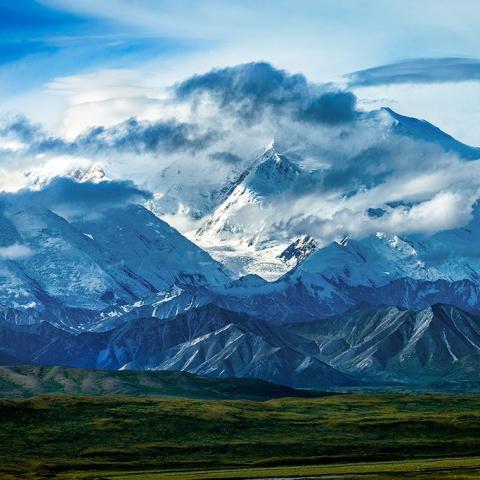
The National Park Service is moving to ban bear baiting by sport hunters in national preserves in Alaska/NPS file
The National Park Service has adopted a new regulation pertaining to bear baiting in national preserves in Alaska, a rule that bans the practice for sport hunting but allows it for subsistence hunts focused on putting food on the table.
The narrowness of the rule [attached below] compared to a more restrictive 2015 regulation drew criticism from the Center for Biological Diversity, which said the Park Service had "outrageously failed wolves, bears and caribou across Alaska’s treasured national parklands."
The new regulation, scheduled to take effect in late July, replaces a 2020 regulation pushed through by the Trump administration that allowed any hunter to use donuts and grease-soaked bread loaves to lure in bears, to kill bear cubs and wolf pups in their dens, and to hunt caribou from motorboats. The Obama administration in 2015 had banned those practices.
When it adopted the 2015 ruled against bear baiting on the national preserves, the Park Service "concluded that the practice of putting out bait to attract bears for harvest poses an unacceptable safety risk to the visiting public and leads to unnatural wildlife behavior by attracting bears to a food source that would not normally be there. ... Because bait often includes dog food and human food, including items like bacon grease and pancake syrup, which are not a natural component of animal diets, the NPS was concerned that baiting could lead to bears and other animals associating these foods with people, which would create a variety of risks to people, bears, and property."
Alaska's congressional delegation had urged Interior Secretary Deb Haaland to allow Native Alaskans to bait bears.
"Bear baiting is a traditional hunting practice for many Athabascan hunters, a great number of whom now reside in non-rural areas," the delegation told Haaland in March 2023. "Because of this, they are not considered federally-qualified subsistence users and would be subsequently barred from practicing their traditional hunting practice under this proposed rule. Regardless of the explicit carve-out separating federal subsistence from this proposed rule, the restriction still would negatively harm Athabascan hunters whose right to practice their traditional hunting technique should be respected regardless of where they reside."
While the 2015 rule also prohibited taking any black bear, including cubs and sows with cubs, with artificial light at den sites, taking wolves and coyotes (including pups) during the denning season (between May 1 and August 9), taking swimming caribou, taking caribou from motorboats under power, and using dogs to hunt black bears, the 2020 rule allowed those practices. The new rule does not prohibit those practices, a fact that drew criticism from Cooper Freeman, the Alaska director for the Center for Biological Diversity.
"The National Park Service outrageously failed wolves, bears and caribou across Alaska’s treasured national parklands,” Freeman said Friday evening after the Park Service announced the regulation change. “Allowing sport hunters to trap and kill wolf pups and their mothers during denning season, shoot swimming caribou, and use dogs to hunt black bears is abhorrent, harmful and unsporting. Alaska’s wildlife deserves so much better than this deeply flawed Park Service rule.”
Sarah Creachbaum, the Park Service's regional director for Alaska, said “[T]he amended rule will advance wildlife conservation goals and objectives, including a prohibition on bear baiting in our national preserves, as mandated under the NPS Organic Act of 1916. We take our responsibilities under ANILCA [the Alaska National Interest Lands Conservation Act] seriously and the new rule reflects our commitment to providing conscientious service to the American public.”
The regulation applies to the "preserve" portions of Denali National Park and Preserve, Katami National Park and Preserve, Yukon-Charley Rivers National Preserve, and Wrangell-St. Elias National Park and Preserve.




 Support Essential Coverage of Essential Places
Support Essential Coverage of Essential Places







Add comment